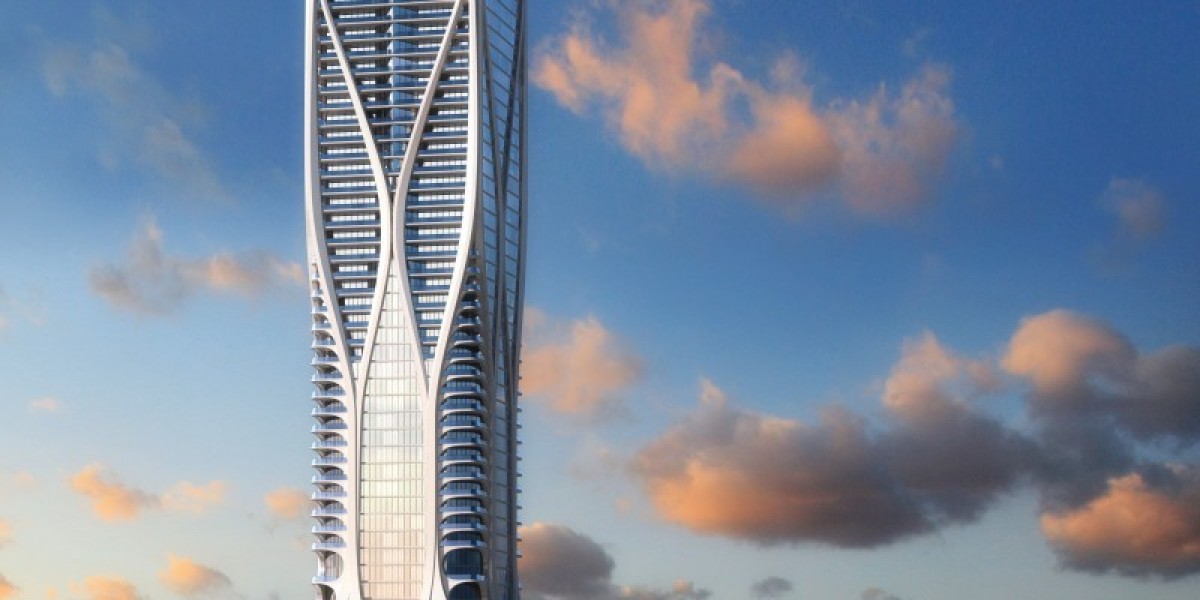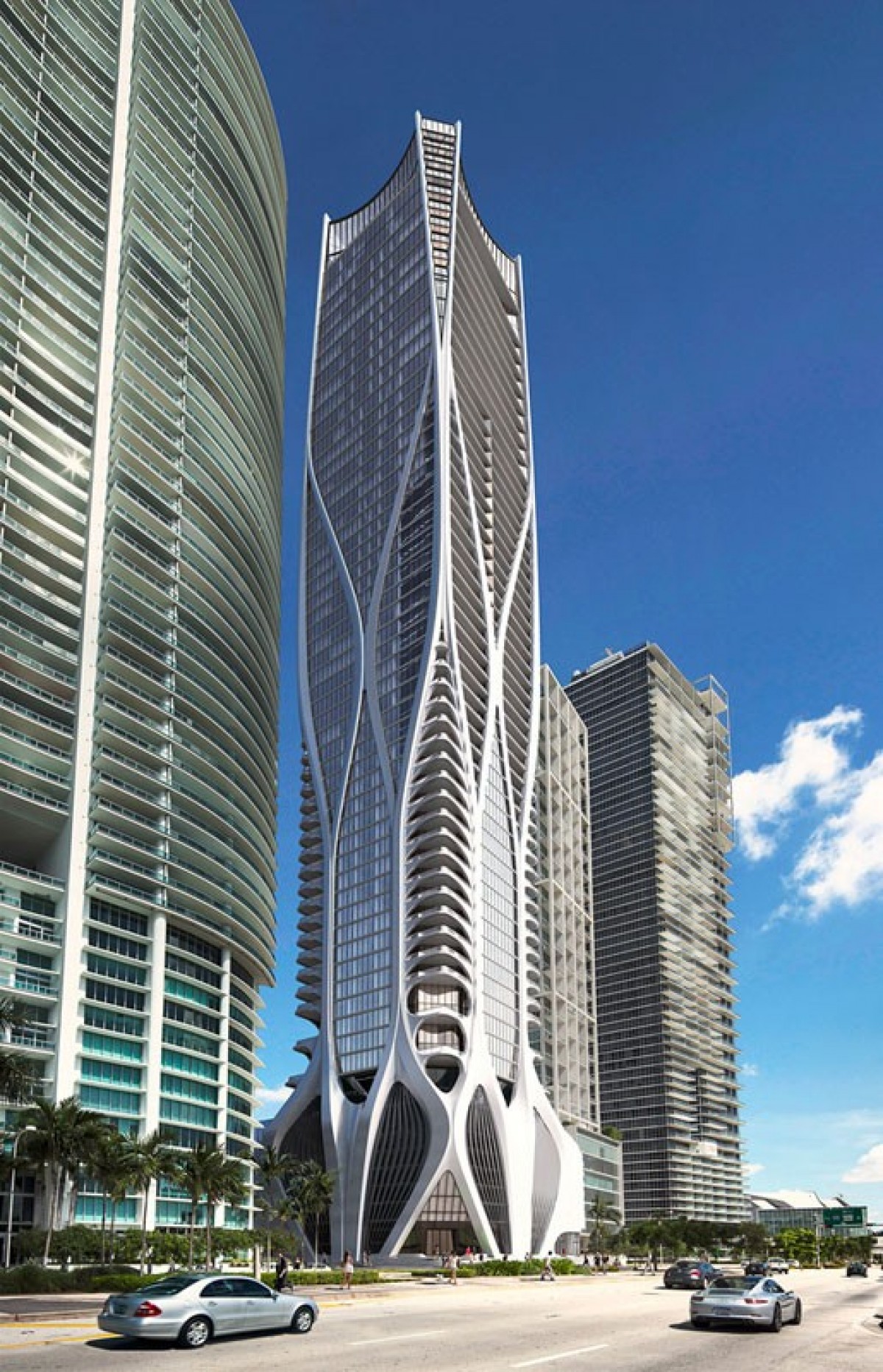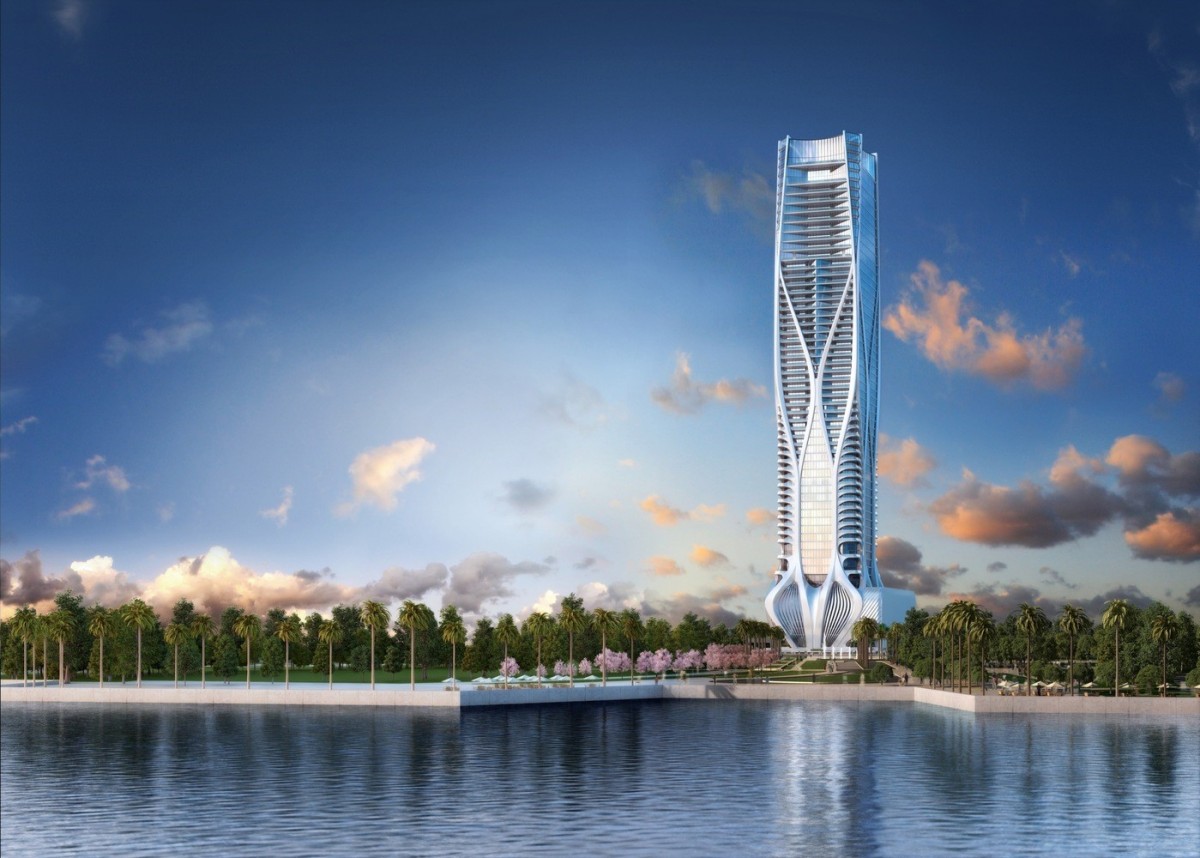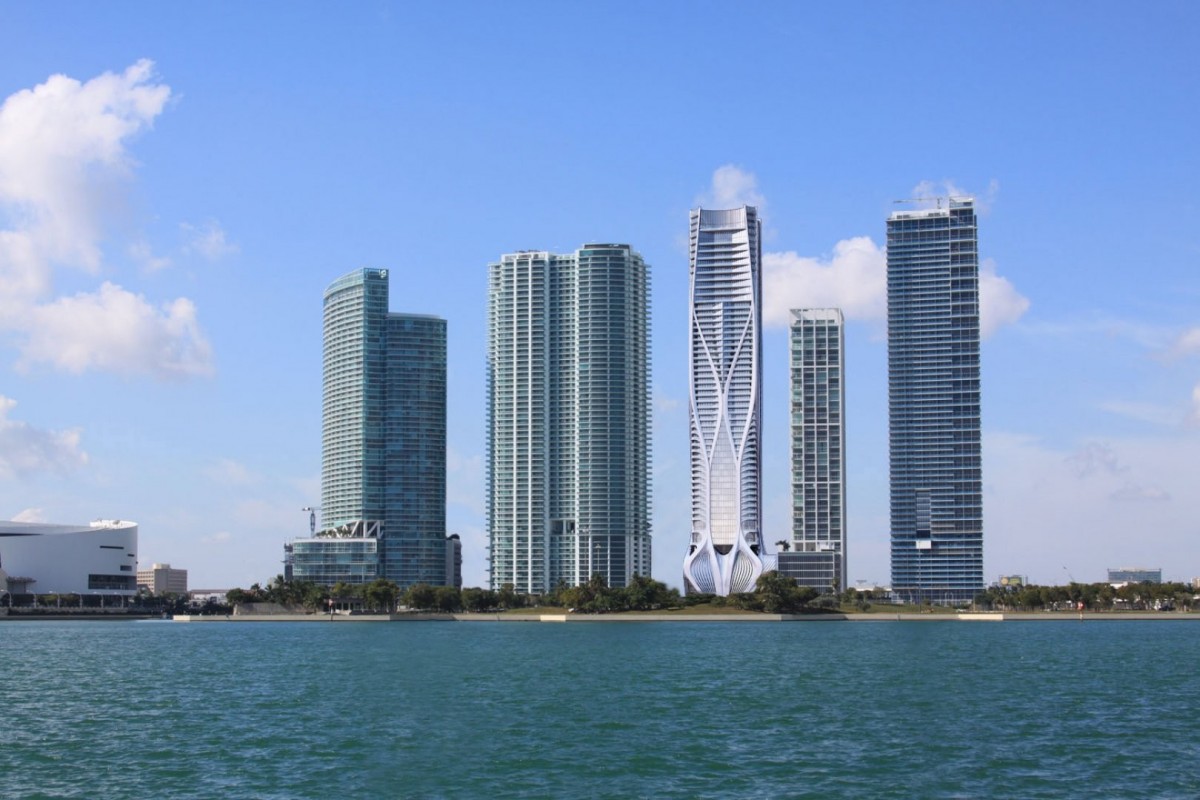





Zaha Hadid changed forever the world of architecture with her radical design and modern revolutionary ideas. We know her iconic creations, which look more like sculptures than buildings. The talent, boldness and originality of the British architect with Iraqi roots continue to fascinate even after her death, in the new projects of architects from her studio Zaha Hadid Architects. Her signature design and architectural language we read through the fluid forms and efficacy of a project that will be completed in December this year. This is the 66-storey, 83-unit, super-luxury condominium tower on Biscayne Boulevard in Miami, opposite Museum Park, with views across Biscayne Bay to Miami Beach.
The name of the architectural studio rarely stands behind the construction of very tall buildings.the project is no less Zaha despite its unprecedented scale. A concrete exoskeleton structures the perimeter of the tower in a web of flowing lines that integrates lateral bracing within the lines of structural support. Columnar lines near the base splay out to meet at the corners, forming a rigid tube highly resistant to Miami’s demanding wind loads.
With structure at the perimeter, the interior floor plates are almost column free, allowing maximum variation in floor plans. The moving, curving lines of the exoskeleton mean that each succeeding floor plan is slightly different from the last. On the lower floors, terraces occupy the corners; on the upper floors, the terraces are tucked in from the edges.
A duplex penthouse occupies the last two residential floors. The final floor features an aquatic center, leisure area, and event space. There is commercial space at the base, along with several stories of parking. At grade, the tower is ringed by pools and gardens.
Zaha Hadid Architects project director Chris Lepine says that the structure—which appears as if it were eroded from a solid—reads from top to bottom as one continuous liquid frame. The tower represents a line of research in high-rise construction that explores a fluid architectural expression consistent with engineering for the entire height of the structure. The emphasis is on expressing the dynamism of the structure in an integrated whole that avoids the frequent typology of a tower resting on a base.
Instead of simply cladding a steel frame, the architects are designing expressive form-work, which can be reused as construction progresses up the tower. The concrete will be painted so that its finished surface is also the architectural finish. “A lot of innovation comes in how we build the form work. We’re looking at several solutions,” continues Lepine. Behind the exoskeleton, the architects have created a folded, faceted, crystal-like façade to contrast with the solidity of the exoskeleton. The dependable Miami sun will create plays of light on the glass within the structural frame.
There is no doubt that this luxurious residential complex will become one of the iconic buildings in Miami.